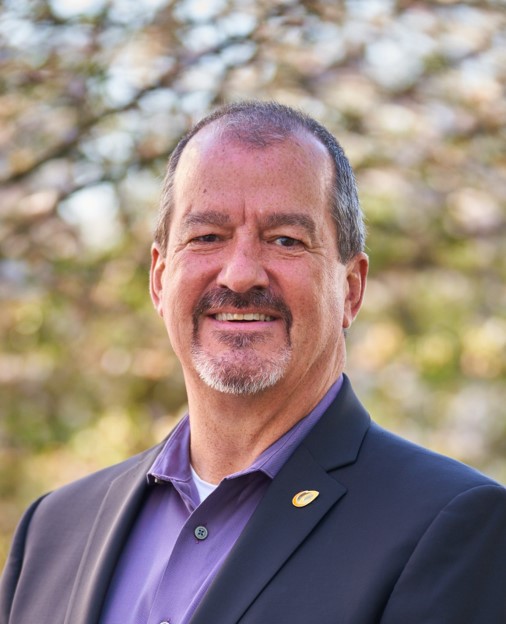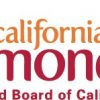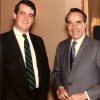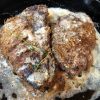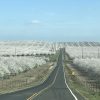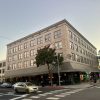Daren Williams – Almond Board of California
By Chris Murphy
Almonds
Where did all of these Almonds come from? It seems just twenty years ago we were all peaches, apricots and tomatoes. But then came almonds. Almonds have actually been an important part of our economy for decades. From the old Blue Diamond ads, “just a can a week” commercials, to the almond being the center of a health and fitness revolution, a staple in trail mix, flour, “milk”, and is the cornerstone of healthy eating. The California almond holds a special place of premium quality, exporting to over 100 countries and is the gold standard for almonds. Modesto sits in the middle of the largest almond growing region in the world and to all that live around here, know when it is harvest season and whether you call them ALL-monds or AAH-minds, they are a huge part of our local agricultural fabric.
So why are we talking about almonds? Almonds have one of the most beautiful growing seasons of any ag product. Like the cherries in Japan and Washington, the Almond blossom is one of the most beautiful things you can see. Miles and miles and acres and acres of white blossoms are stunning, so stunning in fact, that the Almond Blossom Cruise attracts people from all over the world. During the pandemic this driving tour really exploded and this year, we are expecting an amazing blossom season.
Seriously though, Almonds are big business and our region is at the middle of it all. It is complicated as our ports have backed up, our exports have suffered, but all along the way, new uses for almonds are found daily. We needed some expert information so we reached out to Daren Williams, the Senior Director of Global Communications for the Almond Board of California, based in Modesto where he oversees communications to almond growers to drive adoption of best practices throughout the industry and, in turn, share the positive story with customers and consumers.
Daren is a native Kansan and began his career in Washington D.C. working on Senator Bob Dole’s 1988 presidential campaign. When that effort fell short of the White House, he joined a Washington, D.C.-based agricultural public affairs firm, representing clients in the halls of USDA, FDA, EPA, and Capitol Hill. He later worked with Fleishman Hillard International Communications in Kansas City and most recently the National Cattlemen’s Beef Association in Denver.
Daren holds a bachelor’s degree in English from Ottawa University in Kansas, where he met his wife, Leslie. Daren and Leslie have two grown daughters, Shelby and Haley. Let’s meet Daren.
ModestoView: First and foremost, is it AAH-mind or ALL-mond?
Daren Williams: It depends on who you ask! At the Almond Board we say “ALL-mond” but a young woman on my team, whose family grows them in Escalon, they are “AAH-minds.” When I first got here people told me they are “ALL-monds” growing on the tree and “AAH-minds after they are harvested, because the harvest process shakes the “L” out of them, but I think they were pulling my leg. The bottom line is we don’t care what you call them as long as you enjoy them!
MV: Almonds have been a key part of the Central Valley Agriculture for a long time, what happened over the last 20 years that made almonds a superstar crop?
DW: Actually, the story of how almonds became a global health nut began in Modesto with the Modesto Rotary club! As former Almond Board CEO Rodger Wasson tells it, MoRo members were provided a daily serving of almonds in exchange for submitting to a regular cholesterol check — and apparently the results were dramatic. Of course, that first “research” wasn’t enough to support a heart health claim but years of nutrition research since then has substantiated the claim and almonds are widely accepted as an important part of a heart-healthy diet. This “health halo” drove global demand which, in turn, led farmers to plant more almonds.
MV: How many acres of almonds are there in California and how big is the almond economy in dollars?
DW: Almonds grow on approximately 1.5 million acres (about twice the area of Yosemite National Park) in California (120,000 of which are in Stanislaus County), making it the largest crop in both acreage and economic value, creating 110,000 jobs and adding $12.7 billion to the state GDP (64,000 jobs and $7.95 billion in the Central Valley). With our hot, dry summers and cool, wet winters, the Central Valley is the best place in the world to grow almonds!
MV: What made you want to join the Almond Board and what does the Almond Board actually do?
DW: The Almond Board is a grower-funded commodity marketing board. Our primary charge is to grow global demand for almonds grown in California. I have spent a good part of my career working for these types of organizations – from Beef (It’s What’s for Dinner) to Pork (The Other White Meat) to Dairy (Got Milk?) – so was very familiar with the Almond Board. When I learned the Almond Board was looking for someone to lead a new department (Global Communications) I jumped at the chance for several reasons. First, I love almonds! I start almost every day with a handful. Second, I love California! I have family in Sacramento and California farmers lead the way in the production of many agricultural products. It has been everything I hoped for and more – living in Modesto has exceeded my expectations. I’m a big fan. As a foodie, the biggest surprise was the vibrant food scene. But I know I don’t have to convince you!
MV: How have the backups at the Port of Oakland affected the harvest and the exports?
DW: We export 70% of the almonds grown in California to more than 100 countries around the world (consumers everywhere love California almonds!). Most of those exported almonds – about 85% — leave the state via the Port of Oakland. While this year’s crop is down about 10% from the record crop in 2020 (3.1 billion lbs.), it is still the second-largest crop in history (approximately 2.8 billion lbs.). The good news is we have strong global demand, and the supply to meet it, but that doesn’t do much good if we can’t ship it. So, resolving the port issues is a major priority for the industry.
MV: People go to Japan and Washington DC to see the cherry blossoms, what is so different about the Almond Blossom Cruise?
DW: I lived in Washington, D.C. for almost 20 years and experienced the Cherry Blossom Festival many times. There is no denying the beauty of the cherry blossoms set against the backdrop of the Jefferson Memorial, but I was blown away when I arrived in the Central Valley during the middle of the bloom in 2018. The miles and miles of pink and white blossoms dotting the countryside are unlike anything I had seen. I couldn’t stop taking pictures and posting on social media to encourage my friends to visit. Now, when they do, I can take them on the Almond Blossom Cruise!
MV: What do you think the future of almond production is?
DW: Having gone from beef to nuts I am bullish on the future of almond production in California. We are growing trees, which are good for the environment, to produce food that is good for people (and dairy cows, which eat the leftover almond hulls!). It’s a win-win-win. Do we have challenges? Certainly. Water availability is a major issue. With improvements in irrigation efficiency, we use one-third less water to grow almonds today than in the 1990s but the multi-year drought we’re in has strained resources. Growers want to be part of the solution and are looking at ways to use orchards to recharge groundwater during the rainy season, but we also need more reservoirs to hold water during the rainy season so we can balance out irrigation throughout the year.
MV: What is your personal favorite almond product?
DW: I like to go to the Modesto Farmers Market and buy whole, natural almonds grown locally. I eat them with cottage cheese and blueberries for breakfast. But I also love the Applewood-smoked almonds from Rodin Farms (mix with their dried blueberries for a sweet, savory, and healthy snack) and almond butter milkshakes from Roberts Ferry Nut. Co. (for a more indulgent snack!). By the way, both are stops on the Almond Blossom Cruise!
MV: If a local restaurant were to make the most amazing almond dish, what would it be?
DW: When I made it Facebook official that I was leaving beef to come here I made almond-crusted filet mignon for dinner (and posted the pic, of course!). I’ve never seen it on a restaurant menu, but it was amazing!
MV: Local restaurants, if you are reading this, almond-crusted filet sounds amazing! Just sayin’
MV: What do you enjoy most about representing almonds here in our area?
DW: The people – from the almond growers to my colleagues at the Almond Board, I have met many wonderful people who are dedicated to “making life better by what we grow and how we grow,” which is the vision of the Almond Board.
MV: Beatles or Stones?
DW: Stones. I saw them on the Steel Wheels tour in 1989 at RFK Stadium in D.C. Amazing show. But if you had a third option it would be Pink Floyd. Dark Side. Wish You Were Here. The Wall. These are the albums that I wore out on my turntable! BTW, did you know the Allman Brothers were originally called the Allman Joys? Or was it AAH-man Joys? 😊
Learn more at:
Almond Board of California: www.almonds.com
The Almond Blossom Cruise: www.visitmodesto.com
Stay up to date about local events: www.modestoview.com


